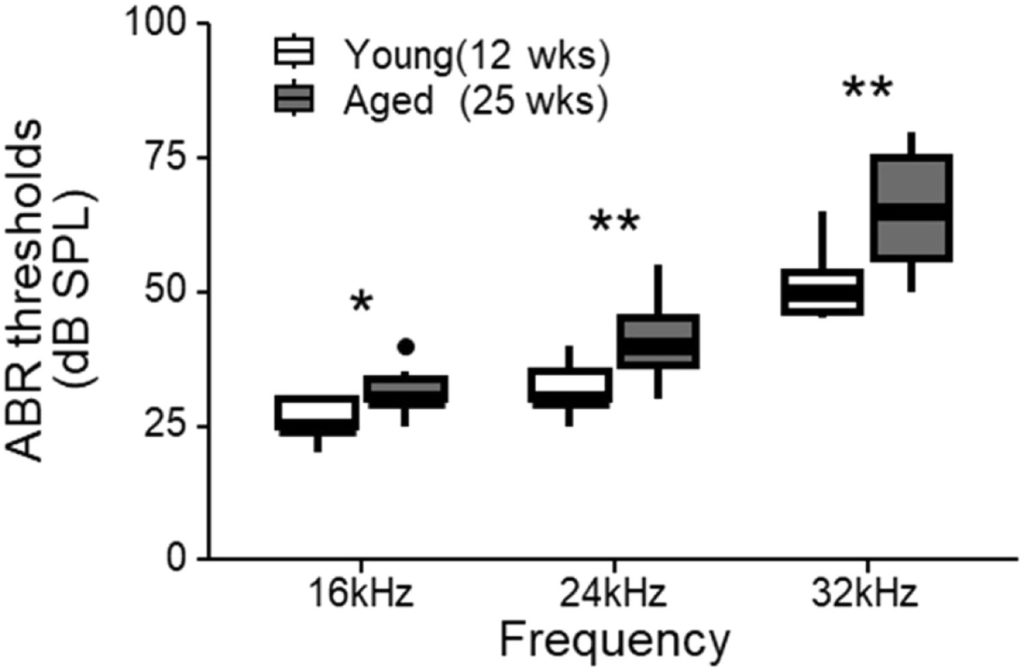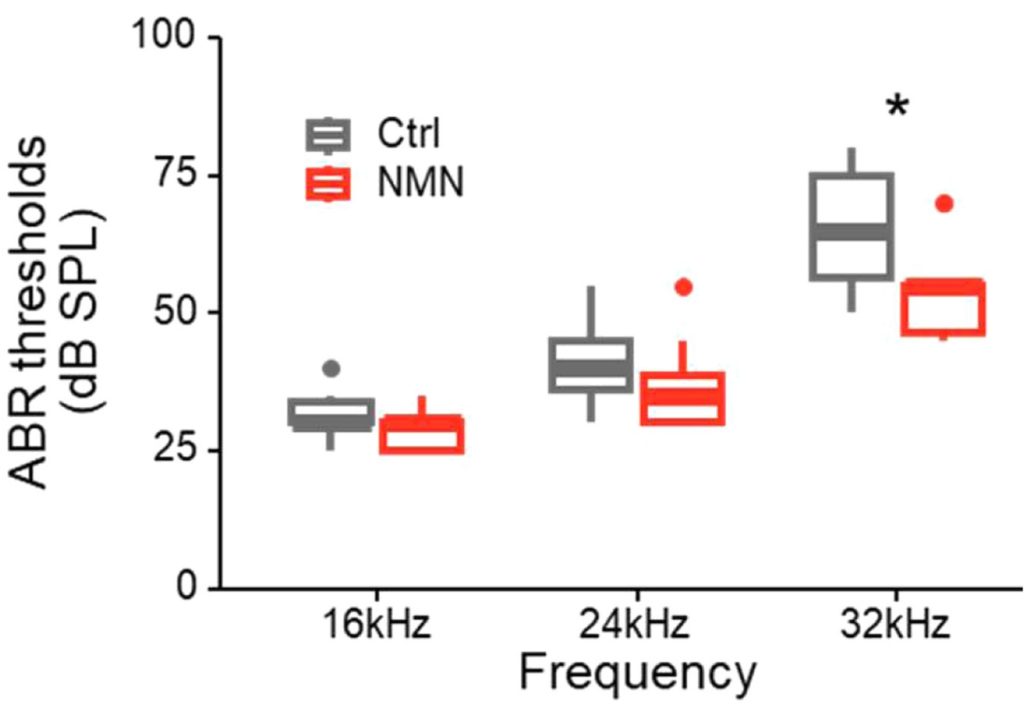NMN Suppresses the Progression of Hearing Loss, New Research from Japan Shows
Japanese scientists find that NMN (nicotinamide mononucleotide) supplementation prevents age-related hearing loss in mice.
Highlights:
- Compared to young mice, older mice exhibit hearing loss.
- NMN prevents this age-related deficits in hearing.
According to John Hopkins, mild hearing loss doubles the risk of dementia, moderate loss triples the risk, and severe hearing loss increases the risk fivefold. While hearing aids can slow cognitive decline, they can be expensive, amplify background noises, distort sounds, and be uncomfortable to wear. For these reasons, finding ways to prevent, delay, or even reverse age-related hearing loss can potentially be advantageous to everyone.
Now, researchers from Wellness Science Labs in Japan have found that the NAD+ precursor NMN prevents age-related hearing loss in mice. However, taking into account previous studies, it does not appear that restoring NAD+ levels can mitigate hearing loss in humans.
NMN Suppresses Age-Related Hearing Loss
Mice naturally lose their hearing with age, much like humans. To confirm this, the hearing of 25-week-old mice (approximately equivalent to 30 human years) was compared to that of 12-week-old mice (approximately equivalent to 21 human years). It was found that the auditory brainstem response (ABR) threshold — the threshold of sound intensity that stimulates the brainstem’s electrical activity — was higher in the 25-week-old mice than the 12-week-old mice, suggesting that mice develop hearing loss at 25 weeks old.

To determine the effects of NMN on age-related hearing loss, 12-week-old mice were fed 500 mg/kg/day of NMN for 13 weeks. The results showed that, compared to control mice that were fed water, the NMN-treated mice had significantly lower ABR thresholds, suggesting that NMN suppressed the progression of age-related hearing loss.

Studies have shown that NAD+ levels decline with age in multiple organs, contributing to chronic diseases. However, upon measuring NAD+ levels in the cochlea — the structure in the ear involved in hearing — of young and aged mice, no age-related loss in NAD+ levels was detected. This could be explained by the relatively young age of the “aged” mice in this study. A previous study showed that 12-month-old mice (approximately equivalent to 43 human years) have lower cochlear NAD+ levels.
To further examine how NMN could prevent hearing loss, the researchers measured cochlear changes in gene activation. They found that NMN led to changes in ion homeostasis. From these results, the authors speculate that NMN may counteract the age-related dysregulation of iron and zinc in the inner ear. However, further research will be needed to test this idea.
Can NMN Mitigate Hearing Loss in Humans?
A previous study showed that NMN supplementation did not significantly improve the hearing capacity of older men. Another study by the same group showed no correlation between blood NAD+ levels and hearing capacity. Based on these studies, it is possible that low circulating NAD+ levels do not affect inner ear function and hearing. Studies exploring whether NAD+ levels drop with age in the cochlea of humans may elucidate whether NAD+ precursors are a viable option for treating age-related hearing loss by restoring NAD+ levels.

